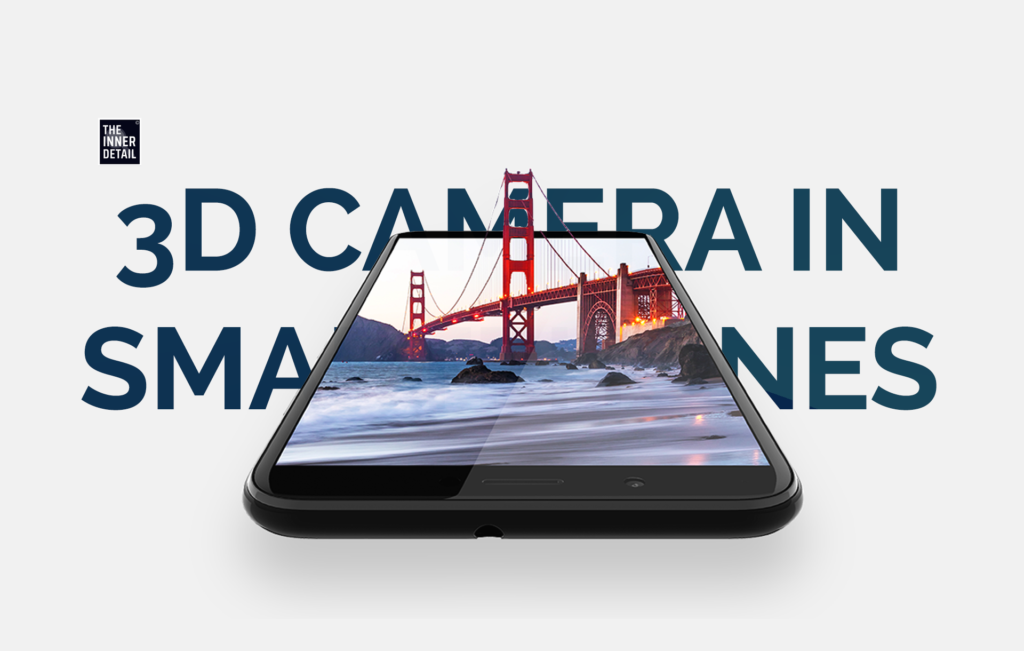Smartphone photography has reached heights as people’s interests on capturing the moments grew exponentially. Taking selfies leisurely, clicking memorable group photos to even filming in smartphones, camera technology in smartphones now possess upto 200 megapixels quality in some models, opening up wide range of possibilities on capturing the world.
Adding flavor to that, for the first time in World, you’ll soon be able to capture Images in 3D with your Smartphone Camera, completely elevating the Smartphone Photography to the most exciting level.
Led by Researchers of Stanford University, the approach allows standard image sensors in smartphones to see light in 3D. This upgrades the smartphone’s ability to measure the distance to objects and make three-dimensional imaging widely accessible in the tech.
Standard image sensors prevailing in current smartphones capture only light intensity and color. Though relying on off-the-shelf camera tech – CMOS and enabling the phone to click in tens of megapixels, it’s fully limited to capturing only in 2D, flat images.
Technology behind 3D Imaging – Lidar
Measuring distance between objects with light is possible only with specialized Lidar – short for ‘light detection and ranging’ systems, which is although expensive. When put into action, Lidar sends out laser that gets bounced back as light from different objects standing forth. By measuring the light, it can tell how far away the thing is, how fast it’s travelling, if the objects are moving closer or far away and if the paths of two objects will intersect.
The lidar is currently deployed in self-driving cars, to determine the distance between the car and any obstacle. Currently, Lidar is used in iPhone 13 Pro and iPhone 13 Po Max too, improving focus in night mode and low light. Perhaps, these lidar sensors are way too high in price.
The lidar what the Stanford researchers are developing, is less expensive compared to apple and is affordable to all smartphones.
Existing 3D cameras support specialized pixels. These have small fill factors meaning complex electronics will be needed to capture 3D in pixels. Our all-new approach is simple and integrates into everyday cameras like cellphones and digital cameras”, says Okan Atalar, a doctoral candidate in electrical engineering at Stanford University.
New Technology for 3D Imaging – Acoustic Resonance
It’s possible to upgrade standard sensors to 3D imaging is by adding a light source and a modulator that turns the light on and off millions of times every second. By measuring the variations in the light, distance is calculated. Existing modulators require impractically large amounts of power.
However, Stanford team had come up with a solution – using acoustic resonance. Acoustic Modulator using a wafer of lithium niobate – a transparent crystal that is highly desirable for its electrical, auditory and optical properties – coated with two transparent electrodes.
Lithium niobate is critically piezoelectric. When electricity is introduced through the electrodes, the crystal lattice at the heart of its atomic structure changes shape. It vibrates at very high, very predictable and very controllable frequencies. And, when it vibrates, lithium niobate strongly modulates light – with the addition of a couple polarizers, this new modular effectively turns light on and off several million times a second.
3D Camera on Smartphones
So technically, the piezoelectric effect is creating an acoustic wave through the crystal that rotates the polarization of light in desirable, tunable and usable ways. It is this key technical departure that enabled the team’s success. Then a polarizing filter is carefully placed after the modulator that converts this rotation into intensity modulation – making the light brighter and darker – effectively turning the light on and off millions of times a second.
Related Posts
“While there are other ways to turn the light on and off,” Atalar says, “this acoustic approach is preferable because it is extremely energy efficient”.
Being simple and able to integrate with existing cameras, the tech would lead to ‘standard CMOS lidar’, as they call it, that could get seated in drones, extraterrestrial rovers and other applications.
Practical Experiments
The impact for the proposed modulator is enormous; it has the potential to add the missing 3D dimension to any image sensor, they say. To prove it, the team built a prototype lidar system on a lab bench that used a commercially available digital camera as a receptor. The authors report that their prototype captured megapixel-resolution depth maps, while requiring small amounts of power to operate the optical modulator.
Better yet, with additional refinements, Atalar says the team has since further reduced the energy consumption by at least 10 times the already-low threshold reported in the paper, and they believe several-hundred-times-greater energy reduction is within reach. If that happens, a future of small-scale lidar with standard image sensors – and 3D smartphone cameras – could become a reality.

